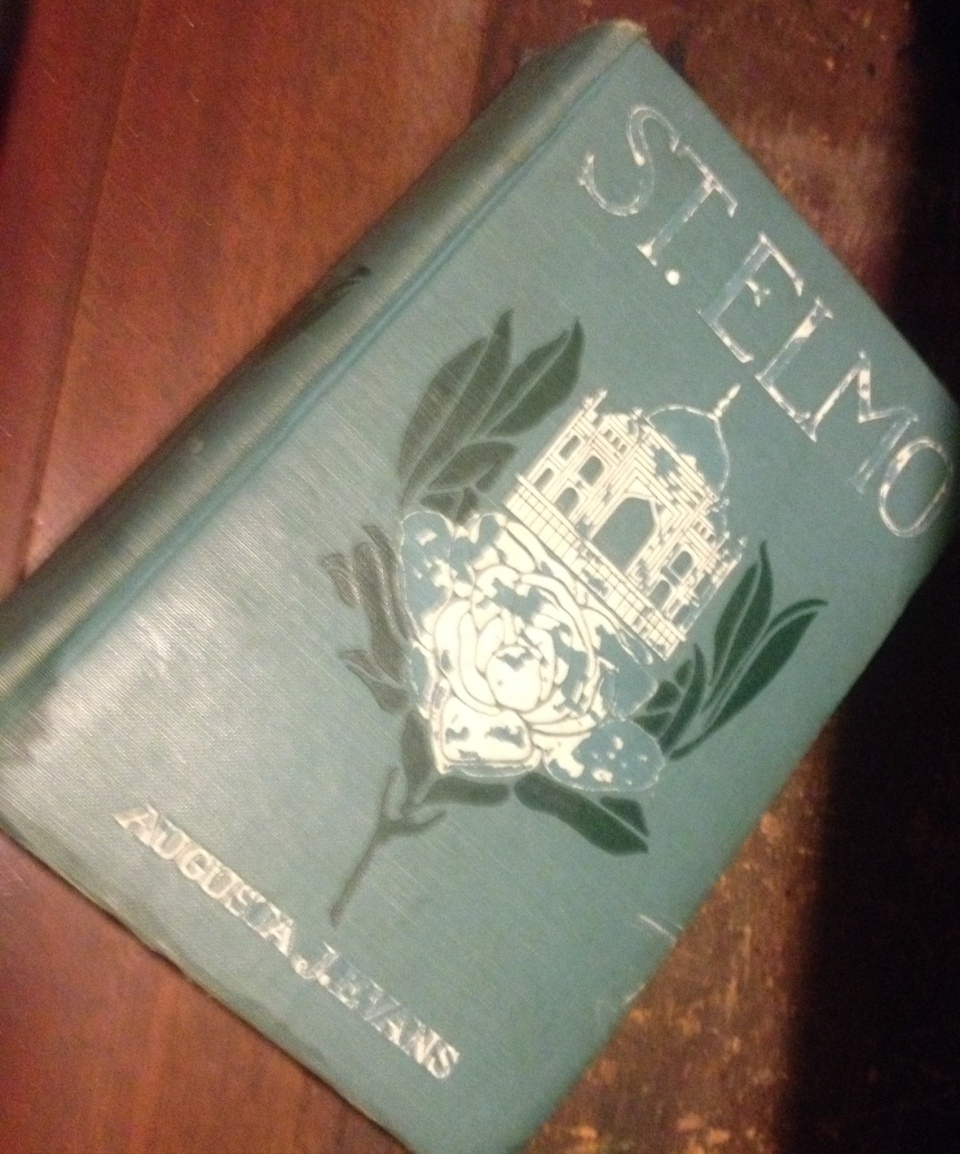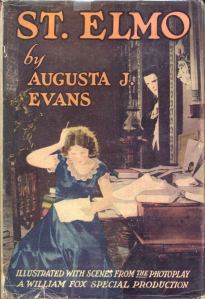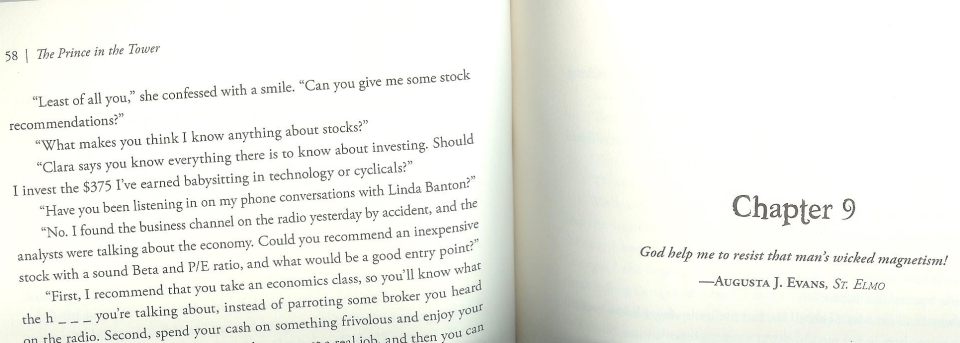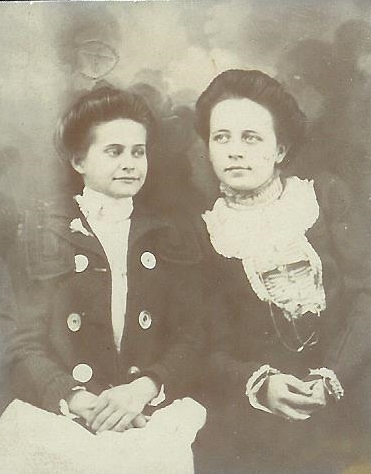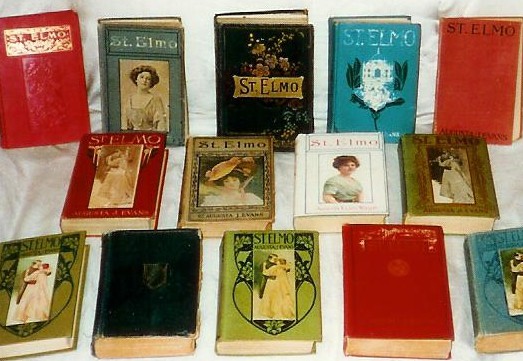
ST. ELMO, by Augusta Jane Evans, was written in 1866. ST. ELMO was the third bestselling novel (after BEN HUR and UNCLE TOM’S CABIN) in the 19th century, equivalent in popularity to the 20th century novel GONE WITH THE WIND. In fact, according to Margaret Mitchell’s biography, Rhett Butler was modeled after St. Elmo Murray. The book inspired plays and was adapted to film in 1923. The ST. ELMO silent film, starring John Gilbert and Bessie Love, is sadly a lost film.
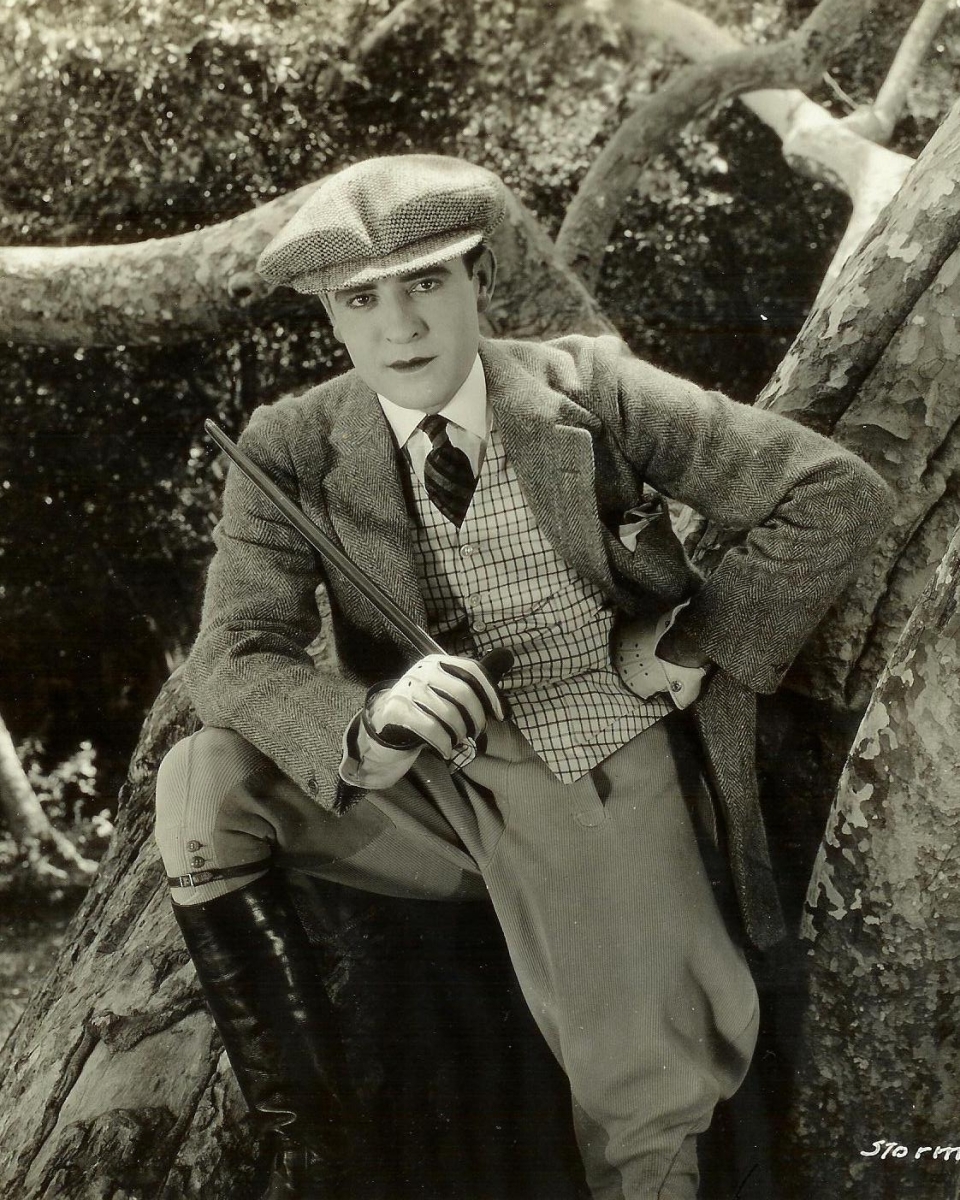
John Gilbert in ST. ELMO (Fox, 1923)

The story begins at the foot of Lookout Mountain in Chattanooga, Tennessee. (Today that part of Chattanooga is named after the book.) “Edna Earl” is an orphan of humble means living with her grandfather. Early one morning, Edna stumbles upon a duel in which a man is killed near her home. Having witnessed the duel from beginning to end, she is permanently traumatized by the incident. The victim’s body is laid out in her house. When the victim’s wife comes to see the body, she dies from the shock.
Edna Earl is horrified by the damage that the senseless duel has caused. Meanwhile, Edna adores her grandfather, who is a blacksmith. One day on the way to her grandfather’s shop, she encounters a gruff, arrogant man who is in need of a blacksmith to replace a horse shoe. Edna directs him to her gran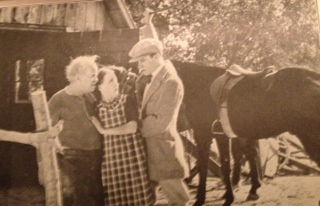 dfather’s shop. The man is impatient, swearing as he waits for her grandfather to finish the job. As the man rides away, Edna’s grandfather says to her: “He is a rude, blasphemous man.” Edna notices that “the rude blasphemous man” drops a book as he rides away in haste. The book is a leather-bound copy of DANTE with the initials SEM inside the flap. Edna learns to treasure the book for its text and illustrations.
dfather’s shop. The man is impatient, swearing as he waits for her grandfather to finish the job. As the man rides away, Edna’s grandfather says to her: “He is a rude, blasphemous man.” Edna notices that “the rude blasphemous man” drops a book as he rides away in haste. The book is a leather-bound copy of DANTE with the initials SEM inside the flap. Edna learns to treasure the book for its text and illustrations.
When her grandfather dies unexpectedly, Edna tries to make it on her own. Just 13-years-old, she boards a train bound for Georgia. The train wrecks. Many die but Edna survives and is rescued by one of the locals, “Ellen Murray,” a wealthy widow. Edna begins to recover under the widow’s care. The two bond and Mrs. Murray decides to raise the orphan, as if she were her own child. Then, something happens that shatters Edna’s contentment. Mrs. Murray’s son arrives home.
Edna hears his harsh voice in the next room and realizes that he is “the rude blasphemous man” who disrespected her beloved grandfather. She returns his copy of DANTE at the first opportunity, realizing that the initials SEM stand for “St. Elmo Murray.”
Throughout the rest of the novel, Edna Earl is torn between loathing and loving St. Elmo. He’s the Byronic type that women love to loath and loath to love. “He’s like a rattlesnake that crawls in his own track, and bites everything that meddles or crosses his trail.” But in time, Edna is “disquieted and pained to discover” in “his bronzed face . . . an attraction–an indescribable fascination–which she had found nowhere else.”
The conflict in their relationship stems from the issue of dueling, a common practice in Augusta Evans day. But the sub-theme–feminism vs. anti-feminism–is the theme that catches the modern reader’s attention. When I say “feminism,” I don’t feminism as we define it today. The book was written long before women had the right to vote. So while “Edna Earl” disapproves of women in politics, she believes that men and women are intellectual equals and applauds women with literary careers.
The book is filled with explosive, romantic tension that just won’t quit. The characters are not particularly realistic; instead, they are larger than life, and that’s what makes the book fun to read. However, ST. ELMO is not easy to read. You will find allusions to mythology mind-boggling at times, but if you like character-driven novels, you won’t be able to put it down. You have to read it more than once to truly appreciate this book. Parts of the book are hilarious, but you might miss the humor the first time around. Much of it is tongue in cheek.
ST. ELMO is enjoying a resurgence of popularity today. Deadra Lore of St. Augustine, Florida, is writing a ST. ELMO study guide that explains the foreign expressions, mythical references, and difficult words peppered throughout the story. Several years ago, filmmaker Robert Clem created a docudrama called “The Passion of Miss Augusta,” which highlights scenes from ST. ELMO and compares the fictional “Edna Earl” with her creator, Augusta Evans. He explores the feminist side of Augusta Evans with riveting drama and insight.
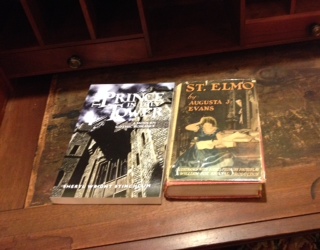
ST. ELMO inspired THE PRINCE IN THE TOWER







 dfather’s shop. The man is impatient, swearing as he waits for her grandfather to finish the job. As the man rides away, Edna’s grandfather says to her: “He is a rude, blasphemous man.” Edna notices that “the rude blasphemous man” drops a book as he rides away in haste. The book is a leather-bound copy of DANTE with the initials SEM inside the flap. Edna learns to treasure the book for its text and illustrations.
dfather’s shop. The man is impatient, swearing as he waits for her grandfather to finish the job. As the man rides away, Edna’s grandfather says to her: “He is a rude, blasphemous man.” Edna notices that “the rude blasphemous man” drops a book as he rides away in haste. The book is a leather-bound copy of DANTE with the initials SEM inside the flap. Edna learns to treasure the book for its text and illustrations.







